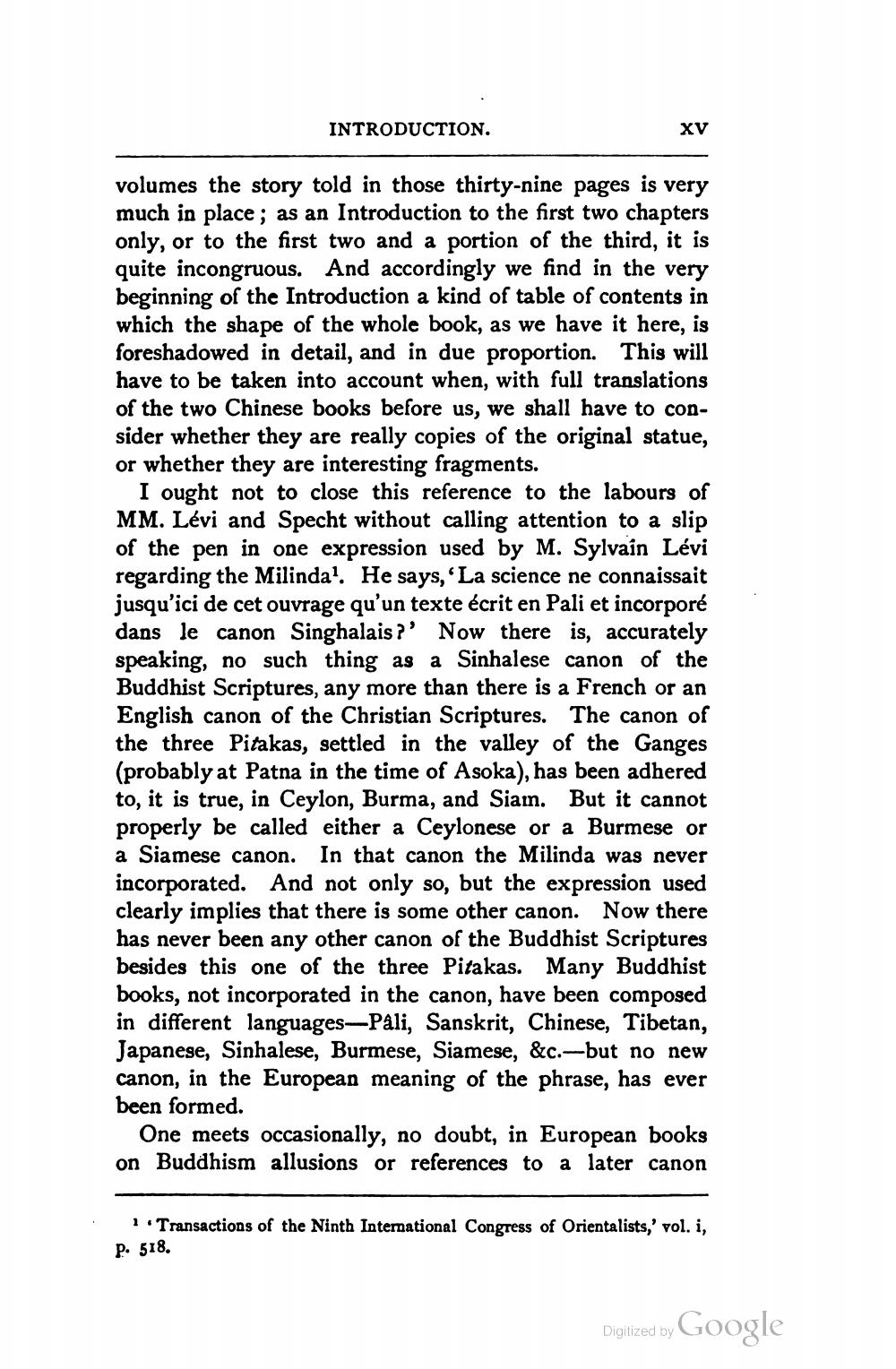________________
INTRODUCTION.
XV
volumes the story told in those thirty-nine pages is very much in place; as an Introduction to the first two chapters only, or to the first two and a portion of the third, it is quite incongruous. And accordingly we find in the very beginning of the Introduction a kind of table of contents in which the shape of the whole book, as we have it here, is foreshadowed in detail, and in due proportion. This will have to be taken into account when, with full translations of the two Chinese books before us, we shall have to consider whether they are really copies of the original statue, or whether they are interesting fragments.
I ought not to close this reference to the labours of MM. Lévi and Specht without calling attention to a slip of the pen in one expression used by M. Sylvain Lévi regarding the Milinda?. He says, 'La science ne connaissait jusqu'ici de cet ouvrage qu'un texte écrit en Pali et incorporé dans le canon Singhalais ?' Now there is, accurately speaking, no such thing as a Sinhalese canon of the Buddhist Scriptures, any more than there is a French or an English canon of the Christian Scriptures. The canon of the three Pitakas, settled in the valley of the Ganges (probably at Patna in the time of Asoka), has been adhered to, it is true, in Ceylon, Burma, and Siam. But it cannot properly be called either a Ceylonese or a Burmese or a Siamese canon. In that canon the Milinda was never incorporated. And not only so, but the expression used clearly implies that there is some other canon. Now there has never been any other canon of the Buddhist Scriptures besides this one of the three Pitakas. Many Buddhist books, not incorporated in the canon, have been composed in different languages-Páli, Sanskrit, Chinese, Tibetan, Japanese, Sinhalese, Burmese, Siamese, &c.—but no new canon, in the European meaning of the phrase, has ever been formed.
One meets occasionally, no doubt, in European books on Buddhism allusions or references to a later canon
1. Transactions of the Ninth International Congress of Orientalists,' vol. i, P. 518.
Digitized by Google




